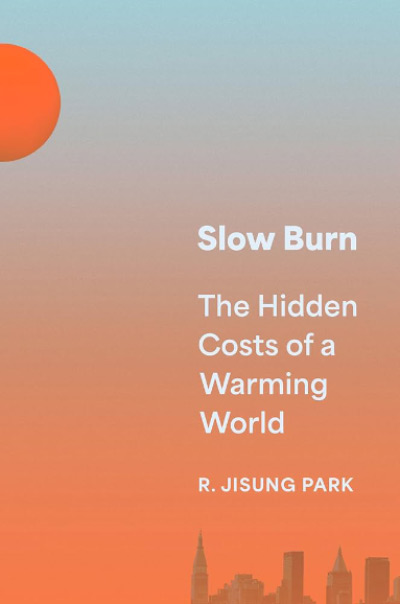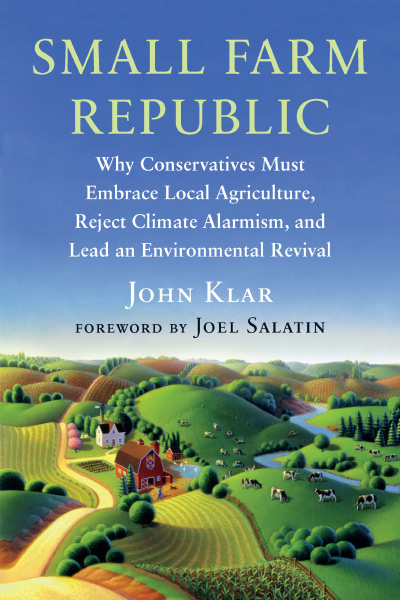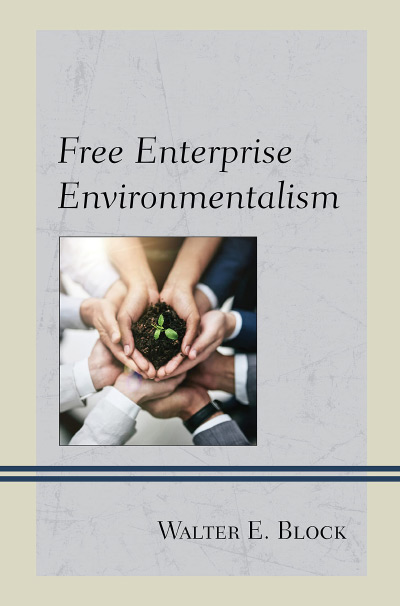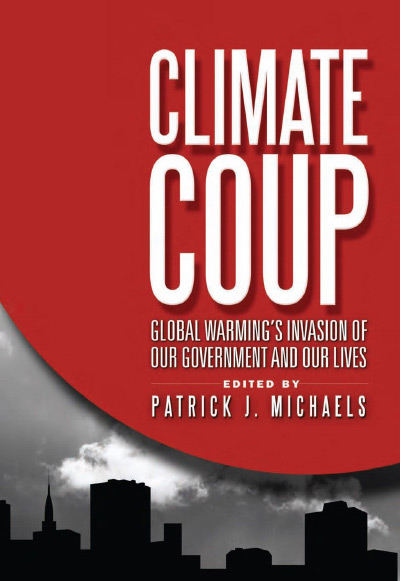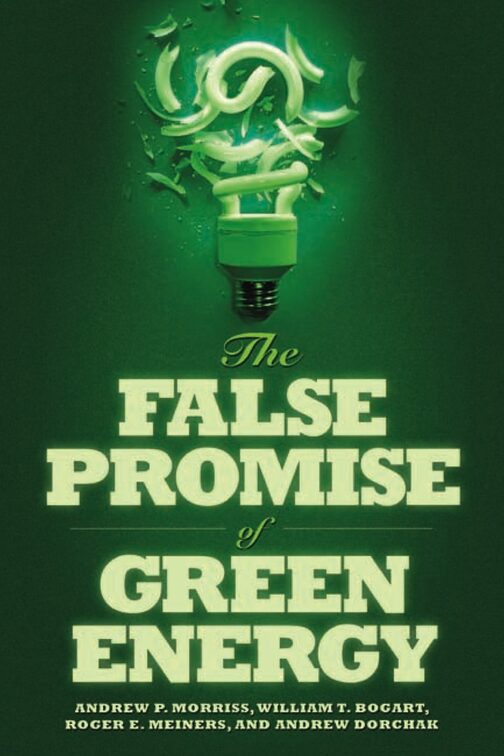On the face of it, No Brainers and Low-Hanging Fruit in National Climate Policy looks pretty scary—or pretty stupid, depending on your point of view. The front cover’s drawing shows a flood washing away houses, a tornado tearing through a denuded forest, another forest that is ablaze, and a polar bear adrift on a tiny ice floe. The foreword, by CEPR CEO Tessa Ogden, warns that “time is running out in the global fight against climate change” (p. vii). And the opening words of the editors’ introduction claim that global climate change is “already wrecking severe damage to the livelihoods of billions around the globe” (p. 1).
The facts belie this apocalyptic vision. The Intergovernmental Panel on Climate Change, for example, concludes that there is “low confidence regarding the sign of trend in the magnitudes and/or frequency of floods on a global scale,” has “low confidence in a global-scale observed trend in drought or dryness. . .since the middle of the 20th century,” has “low confidence in trends in small-scale severe weather phenomena such as hail and thunderstorms,” and reports that “confidence in large scale changes in the intensity of extreme extratropical cyclones. . .since 1900 is low” (see Steven Koonin. 2021. Unsettled? What Climate Science Tells Us, What It Doesn’t, and Why It Matters. Dallas: BenBella Books, which summarizes these data and more). Likewise, the claim of “severe damage to the livelihoods of billions around the globe” flies in the face of rising average incomes and growing life expectancies in recent decades. The World Bank, for example, estimates that real annual global GDP per capita rose from $9,933 to $16,893 from 1995 to 2019—an increase of 70 percent. Even in the poorest region, Sub-Saharan Africa, there was an increase of 42 percent. Declines have occurred in only a small fraction of countries. Our World in Data’s excellent graphics allow one to visualize the immense decline in absolute poverty around the world. Climate change hasn’t ruined the livelihoods of billions. The truth is that the number of people living below the World Bank’s “extreme poverty” line fell from about 1.9 billion in 1990 to about 650 million in 2018.
Fortunately, you cannot always judge a book by its cover. Rather than spinning yarns about catastrophe, most of the authors in this collection take the title seriously, as they provide informative overviews of climate policy in sixteen nations and regions (Argentina, Brazil, the Middle East and North Africa, India, China, Russia, Australia, the United States, Canada, Britain, France, Germany, Denmark, Norway, Sweden, and Poland) and look for strategies that can reduce greenhouse gas emissions at a low cost. Unfortunately, there are numerous questionable calls along the way.
The desirability of eliminating existing subsidies on “dirty” fuels is a common theme. Rabah Arezki, Rachel Yuting Fan and Ha Nguyen’s chapter on the Middle East and North Africa reports that energy subsidies exceed 2 percent of GDP in several countries, including Egypt, Kuwait, Saudi Arabia, Iraq, Iran (over 4 percent), Algeria (almost 6 percent) and Libya (a stunning 15 percent of GDP). However, they remind us that these subsidies have been woven into the social and economic fabric in these countries, so removing them would be a “political bombshell” and isn’t likely to occur any time soon. Ending subsidies is not really a no brainer in these nations.
Reducing coal consumption is another frequently identified low-hanging-fruit to fix climate problems. Coal is very carbon-intensive and in many countries burning coal puts massive amounts of particulates and deadly pollutants into the atmosphere. Because of this, curbs on its use or Pigouvian coal taxes can be very wise—even if you believe that the marginal external cost (MEC) of greenhouse gasses is low or zero. But that brings us to the key issue. What is the marginal external cost of greenhouse gas emissions? The bottom line is that no one knows because no one can know. Because any real damages from greenhouse gases would come decades from now, we simply don’t have a clear grasp of how GHGs will or will not damage the environment, the economy, and our lives. Even if we knew enough about how the environment works, we don’t know what new technologies will be developed that could make problems from GHGs, rather than the polar ice caps, melt away. In a previous review I called this the Titanic Problem. We solved the problem of ships crashing into ice bergs by simply flying over the ice bergs. We already know of simple, inexpensive geoengineering technologies that can reduce global temperatures if needed and we already see people making effective adaptations to high temperatures and the other climate problems they face. New technologies mean it is likely that any damages from GHGs will be much smaller than many fear—but we simply don’t know the magnitudes of future external costs in order calculate their present value and the optimal Pigouvian tax rate.
What are the low-hanging fruit for reducing greenhouse gas emissions? To answer this question, the authors mostly focus on the marginal abatement costs of various policies. In doing so, however, they often frame “low” as low in comparison to other abatement policies, not low in comparison to the marginal benefits of abatement (which are the marginal costs of emissions). If I’m giving advice on how best to lose weight, I can’t tell an adult man to slim down to 135 pounds by slashing calories and cutting back on an array of foods. I have to justify the target of 135 pounds and consider whether this is a reasonable target. But some of the authors take official GHGs emissions targets as the correct goal and then endorse a wide range of policies to reach these targets, even when the costs of abatement are very high. They don’t find many no brainers or low-hanging fruit, and so leap for high-hanging fruit, as though there’s a certain amount of fruit that must be picked—rather than balancing the costs versus of the benefits of these actions. Most economists carry out exercises like this by nodding at the most widely used MEC estimates (which seem inflated in light of the Titanic Problem), but some of the economists in No Brainers and Low-Hanging Fruit in National Climate Policy simply ignore MEC estimates or implicitly assume that they are far above the most widely used estimates.
China has adopted the goal of reaching peak carbon emissions by 2030 or sooner and carbon neutrality by 2060. The European Union’s goals are even more ambitious. Last year, the European Parliament approved the European Climate Law to make its greenhouse gas emissions targets legally binding, with targets to reduce net EU emissions by 55 percent by 2030, from 1990 levels, and eliminate net emissions by 2050. The Biden administration has also announced a goal of net zero emissions by 2050.
Are these ambitious goals credible? Are there numerous no brainers and low-hanging fruit that can allow them to be achieved? The authors of the chapters on China see its goals as tenable—after all the growth in China’s carbon emissions has substantially decelerated, dropping from 9.4 percent year-on-year in the 2000s to an average of 1.1 percent year-on-year in the 2010s. Moving down the Environmental Kuznets Curve after reaching a peak isn’t exactly rare. The U.S. reached its peak greenhouse gas emissions in 2007 and Germany, Britain, and Japan have reduced emissions, as well. However, achieving carbon neutrality is another matter entirely. Figure 4 of Martin Raiser and Sebastian Eckardt’s chapter “From Quick Wins to Big Wins: Policies for Structural Transformation and Low-Carbon Growth in China” is titled “China’s Large Industrial Sector Will Be Hard to Decarbonize” (emphasis added). China inaugurated the world’s largest market last year, encompassing about 12% of total global carbon emissions. But with coal producing 65 percent of China’s electricity and China continuing to build coal power plants, decarbonizing will be a huge challenge. Oddly, the usage of nuclear power is barely mentioned—not just in the two chapters on China, but throughout the volume!
One of the most clear-eyed essays in the collection is Christian Gollier’s “The French Case,” which reminds us that “One of the cheapest ways to reduce CO2 emissions is to replace coal by natural gas in the electricity mix. Per kWh produced, natural gas emits less than half the quantity of CO2 emitted by coal. So, this substitution substantially reduces emissions without reducing electricity consumption. . . .Of course, natural gas is not the panacea, but it is a first step towards a full decarbonation of our economies. Phasing out natural gas will be more complex because it will be the last dispatchable technology in the electricity mix. In the absence of a low-cost technology for massive electricity storage (hydrogen, battery, etc.), and given the high social cost of making electricity demand more flexible, natural gas will remain key to equilibrate electricity supply and demand and to escape blackouts” (p. 137). There’s the rub. The grandiose plans of carbon neutrality hinge on inexpensively storing cheap renewable electricity. It’s quite a leap of faith to believe that this will become economically rational any time soon. Gollier’s chapter also reminds us that France is moving toward leaving low-hanging fruit on the tree, so that it can show its dexterity at picking high-hanging fruit. In France 75 percent of electricity comes from nuclear power, which it can deliver at a levelized cost of 5 cents per kWh. Yet, the French government has generously subsidized renewables, guaranteeing a price for residential photovoltaic panels at 60 cents per kWh.
Michael Hoel’s chapter on Norway is also very clear-eyed. Norway is in a unique position because almost 100 percent of its electricity comes from hydro power. “While the direct emissions from electric cars are zero, the electricity produced for the cars is not without emissions. Norway’s electricity production. . .is almost 100 percent renewable. . . . Hence, emissions from electricity production are not relevant as long as the focus is only on emissions within Norway’s boundaries. However, Norway is closely linked to the European electricity market, so any change in the use of electricity in Norway will be almost completely matched by a similar change in European electricity production. On the margin, a considerable part of this is from coal-fired plants. . . (For this reason, I have some colleagues who refer to electric cars as ‘coal cars’). By this reasoning, although electric cars reduce CO2 emissions in Norway, they increase emissions in the rest of Europe” (p. 178). Hoel goes on to consider the overall impact of the move to electric vehicles in Norway in light of these realities and EU’s Emissions Trading System (ETS), showing that things become very complicated: “Summing up, if the EU emission standards were completely exogenous and binding, subsidising new electric cars would have no effect on emissions from the total fleet of cars (unless the total number of cars increases, in which case emissions also increase). The only possible effect on total EU emissions would then potentially be from the use of coal for generating electricity. Electricity generation is, however, covered by the ETS, so it is not obvious that increased electricity production would lead to more emissions. In reality, the future EU emission standards might depend on the present and future number of electric cars, thus making it more difficult to conclude how a subsidy to electric cars affects global emissions” (p. 179). He concludes that “for Norway’s domestic emissions, unfortunately, there seem to be no low-hanging fruit (i.e. there are no unexploited policies that would reduce emissions at low or zero cost)” (p. 181, emphasis added).
Less convincing is Claudia Kempert’s chapter on Germany, which boldly predicts that “Fossil energies are experiencing increasing devaluation overall. The decade of fossil fuel fire-sales is beginning. All nations that generate high revenues from the sale of fossil fuels will have to change course” (p. 159). Fire sales for fossil fuels? Let’s look at petroleum. It is true that the price of oil nosedived as the decade began, but this is generally attributed to lack of demand due to COVID. Since then, the price has risen—from $58.40 in December 2019 to $88 at the time of this writing. The U.S. Energy Information Administration notes that consumption in 2021 was about 3 percent below 2019’s level, but again attributes this to COVID. This hardly seems like the beginning of a fire sale caused by a switch away from fossil fuels. Those in the oil industry will probably pay far more attention to headlines announcing that “Oil Frackers Brace for the End of the Shale Boom” (Wall Street Journal, February 4, 2022) than suggestions that demand for their product is waning.
Peter Birch Sorenson’s chapter on Denmark unintentionally debunks the idea that Denmark has been especially successful at decarbonizing its economy. He notes that although Denmark’s official emissions fell 30 percent between 1990 and 2015, once one accounts for imports its carbon footprint only shrank 7.4 percent. More importantly, he defines as “low” an abatement cost of €54 (about $62) per ton—which will seem pretty high to many people—and “medium” as €134 (about $150) per ton, which is well above standard (probably inflated) estimates of the MEC of greenhouse gas emissions. Then he lists several policies with these fairly high abatement costs as examples of low- or medium-hanging fruit in Table 1.
The volume closes with four chapters that look at climate policy more broadly. One of these is especially galling: “Climate Policy in the Broader Sustainability Context: Joint Implementation of the 2030 Agenda for Sustainable Development and the European Green Deal,” by thirteen co-authors including Jeffrey Sachs. It advances the idea that there are no actual tradeoffs in climate policy. European carbon minimization policies, we are told, can easily help the environment, boost GDP, increase jobs, reduce consumer prices, reduce income inequality, benefit all regions, and reduce the risk of future pandemics—a win-win-win-win-win-win-win policy. There are free lunches: “Indeed, the European Green Deal contains essentially all no brainers and low-hanging fruits” (p. 212), despite the very real and high costs of abatement outlined in previous chapters. As if to emphasize the purely political nature of this chapter, they end—with an exclamation point—saying “Never waste a good crisis!” (p. 212).
Speaking of recycled political rhetoric, Lint Barrage’s chapter on the United States ends by quoting John Kennedy on putting a man on the moon: “Our leadership in science and in industry, our hopes for peace and security, our obligations to ourselves as well as others, all require us to make this effort” (p. 112-13). Barrage continues that “if the United States can channel this sentiment into the climate challenge, it can no doubt reach extraordinary achievements” (p. 113). Extraordinary indeed—but watch what you wish for. The U.S. did land a man on the moon in 1969, but our leadership in science and industry, hopes for peace and security, and obligations to ourselves and others didn’t require the effort. There was virtually no benefit from the program other than national prestige (a fine thing in this case) and the thrill of the accomplishment—but it came at a high cost. Today few would accept Kennedy’s lofty claims, and many look back on the entire episode as somewhat quaint. Will the quest for net zero emissions amount to the same thing? It’s not clear that the benefits will be substantial, but the costs will likely be titanic, since as the chapters in the book demonstrate, there aren’t very many low-hanging fruit in the orchard.
| Other Independent Review articles by Robert M. Whaples | ||
| Spring 2025 | Millennials, Gen Zs, Capitalism, Socialism, and Confusion | |
| Spring 2025 | Not Stolen: The Truth about European Colonialism in the New World | |
| Spring 2025 | Green Breakdown: The Coming Renewable Energy Failure | |
| [View All (106)] | ||




